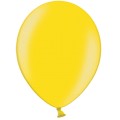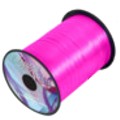Balloons and the Enviroment and Health and Safety
Balloons can be categorised in to two different types, latex and foil (Mylar). The difference between each type of balloon is important in understanding how they should be managed. Latex balloons are comprised of a natural rubber sap, minimal amounts of non-toxic coagulants and pigments.
Latex balloons can be classified by feeling their elastic exterior. Latex balloons are 100% bio-degradable and are broken down by micro organisms in the soil, water and air over a period of approximately 1 year, about the same time as an oak leaf.
If releasing balloons into the atmosphere the balloons should be knotted by hand, with no valves used or string or ribbon attached to the balloon, as these items aren't bio-degradable, and the string or ribbon can get caught around birds feet.
To preserve latex balloons from degrading they will keep many years in the dark, kept dry and at room temperture.
Latex balloons can cause an allergic reaction in some people
Q: What are the symptoms of a latex allergic reaction?
A: Reactions can range from mild to life-threatening:
• Red and swollen skin, rash, hives or itching,
• Itchy, watery eyes, runny nose or sinus irritation,
• Coughing or difficulty breathing (wheezing, tightness in chest),
• "Anaphylatic shock" - any of the above symptoms plus very low blood pressure and obstructed breathing, leading to heart failure and death if left untreated
Q: How common is latex allergy?
A: From 1 to 6 percent of the general public, The more often a person is exposed to latex, the greater is his or her chance of developing an allergy.
Those at highest risk for latex allergy are:
• People born with spina bifida,
• People who have had multiple surgeries,
• People exposed to latex at work,
• People allergic to bananas, avocados, kiwi or chestnuts
Foil Balloons
Please don't go launching one or a bunch of mylar balloons, they are coated in
metal and they conduct electricity well enough to short out power lines.
Foil
balloons are made with Mylar nylon, often coated in a metallic
finish and are available in a range of different sizes and shapes. Foil
balloons aren't bio-degradable and should NEVER be intentionally released into the atmosphere.
What happens to a latex balloon when released?
When a latex balloon is released, it rises to roughly 10km (6 miles). The atmosphere becomes less dense at higher altitudes, which reduces the force pushing in on the balloon, as a result a helium filled balloon expands as it rises and as the temperature drops the balloon freezes, as the helium continues to expand in the frozen balloon, and because latex balloons are reliatively weak the balloon undergoes a process called brittle fracturing and shreds in to small pieces which scatter and slowly fall to earth.
A small proportion of balloons released will experience leaks from defects and will not undergo the brittle fracturing process but just fall back to earth and biodegrade.
Balloons are usually carried by the prevailing winds, which is west to east in the UK and the average distribution of a balloon is 25 square kilometers.
If you want a latex balloon to go a long way, you need it already to have lost a lot of its helium so it is barely able to float at all, then, it will climb very slowly and it may well not burst, it will have room to stretch as it climbs higher.
As it stretches and gets thinner, it will lose helium faster, that's partly because there is less thickness to diffuse though and partly because there is more surface area to diffuse through. So with luck it will slowly climb in altitude not high enough to brittle fracture, and gradually lose lift so it will then very slowly lose altitude, it could take hours to do this & all the while it's carried by the wind further away.
What is Latex?
Latex is an organic vegetal resin composed of 60% rubber and 40% water presented as a white milky liquid with viscosity. Many tree species can produce latex but most of the latex for industrial use comes from the Hevea Brasiliensis, commonly known as the rubber tree.
How is Latex Collected?
Latex is collected from the trees by cutting the trunks skin producing cuts of milimeters deep, the cuts weep latex for about 2 hours through a spout which direct the liquid into a collection cup containing several drops of ammonia to avoid latex coagulation.
After collecting, latex is centrifuged to
increase its concentration and prepared in containers for the distribution to
manufacturers.
Where does latex come from?
Certainly, it's a precious gift from nature coming from the world's tropical regions. Malaysia, Thailand and Indonesia are the largest latex producers.
Are Latex Balloons Earth Friendly?
Yes!, latex trees grow in the rain forests and latex harvesting discourages deforestation because latex producing trees are left intact, the trees are not hurt during harvesting, and can produce latex for up to 40 years.
Our supplier uses only pure natural latex so when you buy our balloons you are contributing to a friendly preserved earth as all our balloons are fully biodegradable. Research showed that a latex balloon biodegrades at the same time as an oak leaf.










